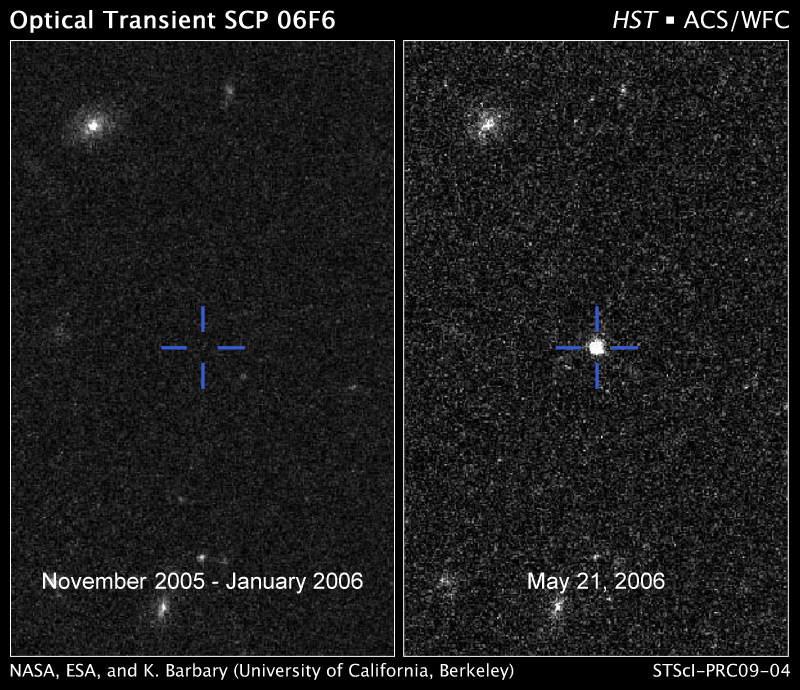The answer, as always, may be in nature. Some parts of outer space are great at getting rid of excess carbon, including an unusual carbon-rich star that was part of a mystery stellar explosion recorded in 2006.
The strange object known as SCP 06F6 was first noted in 2006 by supernovae researchers with the Hubble Space Telescope, seeing it appear from nowhere and then fading again into oblivion over the course of 120 days. The team published their observations in September 2008 but the nature of SCP 06F6 was unclear. Did it happen in our cosmic backyard or at the other end of the universe?

A team of astrophysicists and astronomers at the University of Warwick believe they have come up with an answer. According to their research, the observations of SCP 06F6 bear remarkable resemblance to a group of stars containing extremely large proportions of carbon, hence dubbed carbon stars. However, to achieve the close match, SCP 06F6 must be at a distance of around 2 billion light years, causing a considerable redshift in its appearance. Given the large distance, the sudden appearance of SCP 06F6 is most likely related to the sudden death of a carbon-rich star, and the Warwick team believes that this object may be a new type of a totally new class of supernova.
It would be an unusual type of supernovae in several aspects: SCP 06F6 is located in a blank part of the sky, with no known visible host galaxy. If the star did explode as a normal type II supernova why then did it take up to four times as long to brighten and diminish as other such supernova and why did emit up to 100 times more X-rays energy than expected? The X-ray energy might lead one to speculate that the star was ripped apart by a black hole rather than exploding on its own, but the lead researcher of University of Warwick team Boris Gänsicke says that idea is not without its problems as:
“The lack of any obvious host galaxy for SCP 06F6 would imply either a very low black hole mass (if black holes do exist at the centres of dwarf irregular galaxies) or that the black hole has somehow been ejected from its host galaxy. While neither is impossible this does make the case for disruption by a black hole somewhat contrived”
“Several new telescopes are now being designed and built that will continuously monitor the entire sky for short guest appearances of new stars, and there is no doubt that SCP 06F6 will not remain alone in puzzling astronomers over the coming years. “
Article: “SCP06F6: A carbon-rich extragalactic transient at redshift z~0.14?” by Boris Gaensicke, Andrew Levan, Thomas Marsh, Peter Wheatley, June 1 Astrophysical Journal Letters





Comments